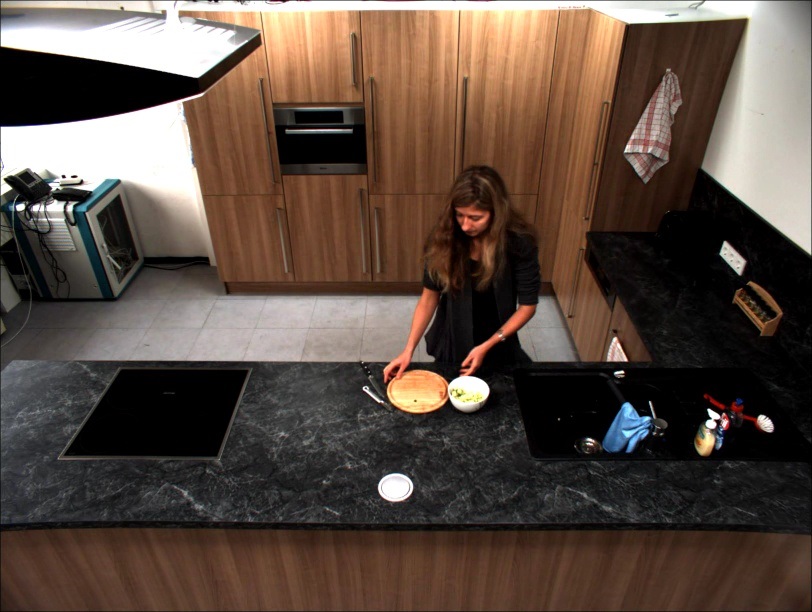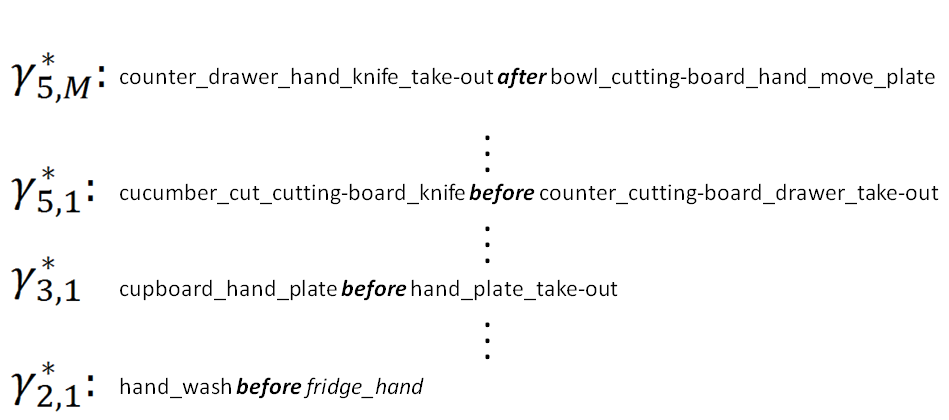Section: New Results
Semi-supervised Activity Recognition Using High-order Temporal-composite Patterns of Visual Concepts
Participants : Carlos Fernando Crispim-Junior, Michal Koperski, Serhan Cosar, François Brémond.
Keywords: visual concepts, semi-supervised activity recognition, complex activities, cooking composite activities
Methods for action recognition have evolved considerably over the past years and can now automatically learn and recognize short term actions with satisfactory accuracy. Nonetheless, the recognition of activities - a composition of actions and scene objects - is still an open problem due to the complex temporal, composite structure of this category of events. Existing methods either still focus on simple activities or oversimplify the modeling of complex activities by only targeting whole-part relations between activity components, like actions. In this work, we have investigated a hierarchical, semi-supervised approach that unsupervisely learns actions from the composite patterns of atomic concepts (e.g., slice, tomato), and complex activities from the temporal patterns of concept compositions (actions). On a first step, an unsupervised, inductive approach iteratively builds a multi-scale, temporal-composite model of the concept occurrences during the activity taking place (Fig. 22 ). Then, activity recognition is performed by comparing the similarity of the generated model of a given video and a priori learned and labeled unsupervised models. We have evaluated the proposed method in the MPII Cooking Composite Activities dataset (Fig. 21 ), a video collection where people perform a set of complex activities related to cooking recipes. To tackle this dataset it is necessary to recognize a large variety of visual concepts (e.g., from actions, such as cutting and stirring, to objects, such as tomato and cutting board). Moreover, the detection of cooking activities is a very challenging problem since we observe a low inter-class variance between activity classes, and a high intra-class variance within an activity due to person to person differences in performing them. The proposed approach presents a mean average precision (mAP) of 56.36% 5.1%, and then outperforms previous methods ( [81] , mean AP 53.90%). This improvement is devoted to the modeling of deeper composite and temporal relations between visual concepts (from 2nd to 5th order compositions). The performance of the proposed method is mostly limited by the performance of low-level concept detectors. Future work will investigate ways to extend the current probabilistic model to handle more efficiently the differences in concept detector performance.
|



